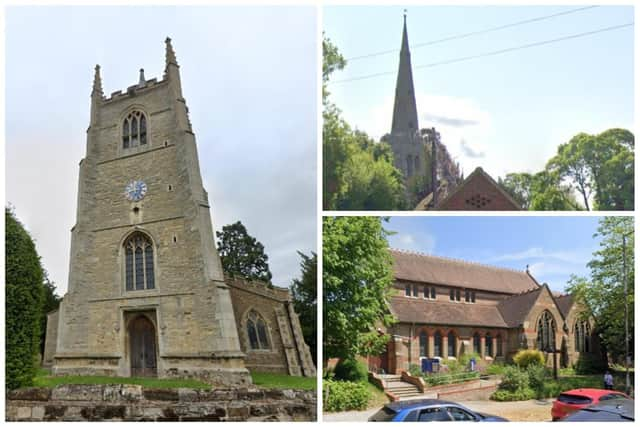Almost a dozen Bedford heritage sites considered at risk - including St Martin's Church in Clapham Road
and live on Freeview channel 276
Almost a dozen historic sites in Bedford are considered to be at risk, new figures have revealed.
There were over a hundred buildings and sites across the country added to Historic England’s Heritage at Risk Register for 2023 – which “gives an annual snapshot of the health of England’s valued historic buildings and places”. The public body said the programme shines a light on historic sites most in need and has brought people together in caring for and enjoying their heritage.
Advertisement
Hide AdAdvertisement
Hide AdThe register shows there were 10 historic sites in Bedford listed as heritage at risk of neglect, decay or inappropriate development as of November 2023 – when records were last updated. These included four listed buildings, five monuments and one conservation area. There was one Bedford historic site added to the register last year, but none were removed.


They are:
St Denys Church, Church Road, Colmworth: Condition – very bad
All Saints Church, High Street, Great Barford: Condition – very bad
St Martin’s Church, Clapham Road, Bedford: Condition – poor
St Mary the Virgin Church, Church Road, Keysoe: Condition – poor
Brickhill: Condition – poor
Advertisement
Hide AdAdvertisement
Hide AdManor Farm Iron Age univallate hillfort and medieval moated enclosure, Bolnhurst and Keysoe: Condition – extensive significant problems
Settlement site north of Chapel End Farm, Cardington: Condition – extensive significant problems
Yarl's Wood hermitage and moated site, Milton Ernest: Condition – generally unsatisfactory with major localised problems
Bury Hill Camp, a motte and bailey castle with three fishponds, Thurleigh: Condition – extensive significant problems
Advertisement
Hide AdAdvertisement
Hide AdPalaceyard Wood medieval moated enclosure and associated enclosures, woodland bank and cultivation earthworks, Wyboston, Chawston and Colesden / Great Barford: Condition – generally unsatisfactory with major localised problems
Matthew Mckeague, chief executive of the Architectural Heritage Fund, said: “We have worked with hundreds of community-led schemes to rescue and reuse historic buildings, including many on the at-risk register.”
Liz Fuller, buildings at risk officer at SAVE Britain's Heritage, said: “It is vitally important to monitor and find new uses for historic buildings which are being neglected as they can deteriorate in condition very quickly. The worse the condition of the building – the more expensive it will be to bring them back into use. Our historic buildings are a national resource and bring character and interest to our streets.”
Historic England said around 6,800 historic sites have been rescued over the past 25 years – equivalent to around three-quarters of the entries on the original register from 1998.
Advertisement
Hide AdAdvertisement
Hide AdChief executive Duncan Wilson added: “Protecting our heritage is so important. The Heritage at Risk programme shines a light on our historic sites most in need and can help to attract funding and help. After a quarter of a century of the Heritage at Risk Register, we are celebrating how many places have been saved and continue to find new ways to involve local people in caring for and enjoying their heritage.”